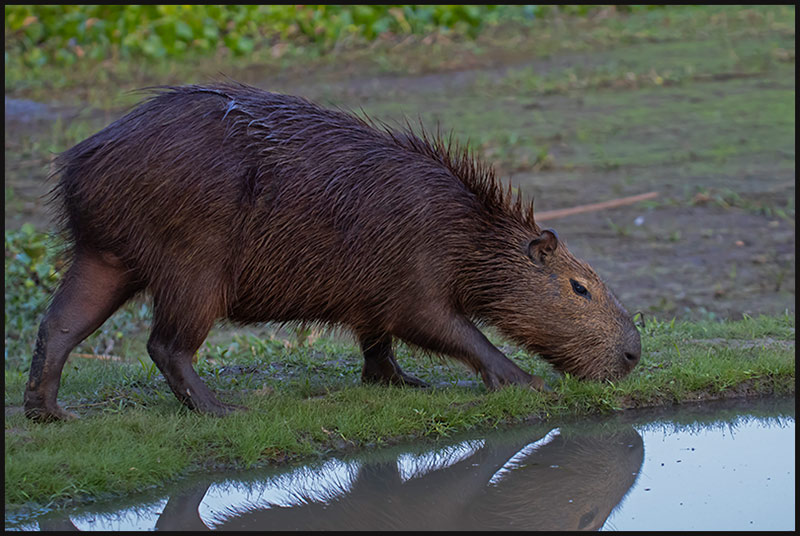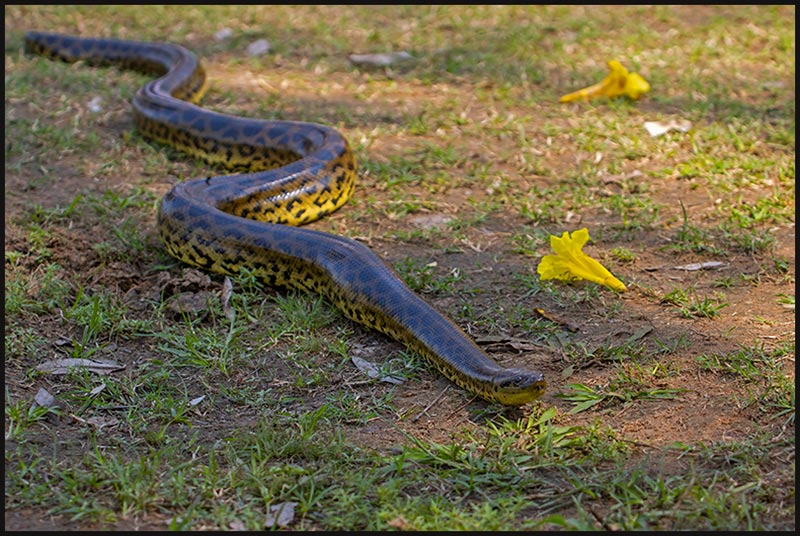Etapas del viaje / Trip sections:
7. Passo do Lontra.
Alrededor de Miranda, tanto hacia el este como hacia el oeste, aparecen diversas "fazendas" donde es posible alojarse y participar en algunas de las múltiples actividades que ofrecen. Ahora bien, su precio suele ser prohibitivo. Nosotros nos dirigimos hacia Passo do Lontra, perteneciente al municipio de Corumbá, ya cerca de la frontera con Bolivia. En Passo do Lontra hay varios alojamientos más asequibles y que también ofrecen sus paquetes de actividades. Aquí merece la pena añadir que el sur del Pantanal está mucho más concurrido y dedicado al turismo, con lo que las actividades están más dirigidas al público general que al naturalista. En cualquier caso, el ecosistema es similar al que habíamos observado en el norte, con algunas especies coincidentes. Nos alojamos durante 2 noches en el Pantanal Jungle Lodge, cuyas actividades no me acabaron de agradar. Desde luego, el esfuerzo para encontrar las distintas especies no se parecía en nada al disfrutado con Djalma o incluso en Projeto Salobra.
Around Miranda, both to the east and to the west, there are various "fazendas" where it is possible to stay and participate in some of the many activities they offer. However, their prices tend to be prohibitive. We headed towards Passo do Lontra, part of the municipality of Corumbá, near the border with Bolivia. In Passo do Lontra, there are several more affordable accommodations that also offer activity packages. It is worth noting that the southern Pantanal is much more crowded and dedicated to tourism, so the activities are more geared towards the general public rather than naturalists. In any case, the general ecosystem is similar to what we had observed in the north, with some overlapping species. We stayed for 2 nights at the Pantanal Jungle Lodge, but I didn't particularly enjoy their activities. Certainly, the effort to find the various species was nothing like what we experienced with Djalma or even at Projeto Salobra.
La crónica de viaje en eBird, el mapa de las principales zonas visitadas, y la lista completa de especies de aves observadas durante este viaje, puede encontrarse en este enlace.
The trip report in eBird, the map showing the main visited locations, together with the complete list of bird species observed in this trip, can be seen in this link.
1. Pantanal Jungle Lodge, Passo do Lontra.
Como a lo largo de todo este viaje, el propio alojamiento se encuentra en una zona privilegiada. Bordeado por el río Miranda y rodeado de bosque y marisma, las oportunidades de ver aves y algún que otro mamífero, como los ubicuos capibaras. Los jabirús americanos se movían por los jardines, y en los comederos varias especies, incluidas palomas montaraces comunes y coloradas, cotorras argentinas o tordos gigantes. Lo mejor de todo fue la observación de un adulto y una cría de búho americano, así como una anaconda amarilla saliendo del río.
As throughout this trip, the accommodation itself is located in a privileged area. Bordered by the Miranda River and surrounded by forest and marshland, there are ample opportunities to see birds and the occasional mammal, such as the ubiquitous capybaras. Jabirus roamed the gardens, and various species frequented the feeders, including white-tipped and pale-vented doves, monk parakeets, or giant cowbirds. The highlight was observing an adult and a juvenile great horned owl, as well as a yellow anaconda emerging from the river.
2. Salida en barca por el río Miranda / Bout tour through Miranda river.
La salida en barca sin duda es de lo mejorcito que ofrencen en el alojamiento. Aquí nos sorprendió ver un águila pescadora, que no esperaba en esta época del año. Por lo demás, las especies muy similares al norte del Pantanal. Eso sí, fuimos testigos de un anochecer espectacular.
The boat trip is undoubtedly one of the best things the accommodation offers. We were surprised to see an osprey, which I did not expect at this time of year. Otherwise, the species were very similar to those in the northern Pantanal. However, we did witness a spectacular sunset.
3. Ruta a pie al norte de la Estrada Pantanal Sul / Walking trail in the north of Estrada Pantanal Sul.
Una de las mañanas nos dirigimos hacia el norte, siguiendo la carretera Estrada Pantanal Sul. Por el camino se dejó ver alguna especie interesante, como una corzuela (entre los mamíferos), un carpintero blanco y un tucán toco. Al final, hicimos una pequeña caminata, que sirvió para ver alguna especie nueva, como los guacamayos aliverdes y el copetón tiranillo, además de otras que ya habíamos observado, como el guacamayo acollarado.
One morning, we headed north, following the Estrada Pantanal Sul. Along the way, we spotted some interesting species, such as a common brown brocket (among the mammals), a white woodpecker, and a toco toucan. In the end, we went for a short hike, which allowed us to see some new species, such as the red-and-green macaws and a brown-crested flycatcher, in addition to others we had already observed, like the yellow-collared macaw.












































